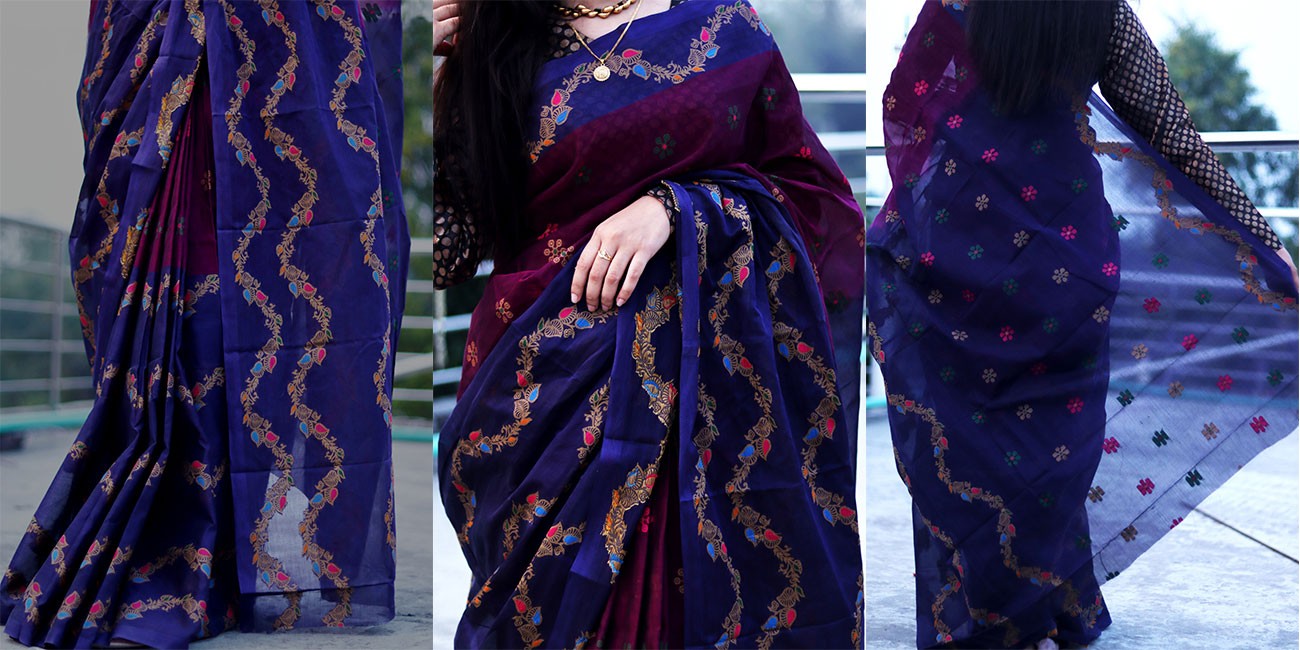
Bangladeshi Tangail Saree: A Symbol of Elegance and Tradition
In the vibrant world of traditional Bangladeshi attire, the Tangail saree stands out as an epitome of elegance and cultural richness. Originating from the Tangail district of Bangladesh, this saree holds a special place in the hearts of women not just in Bangladesh but across the globe.
History and Origin
The history of the Tangail saree dates back to centuries, tracing its roots to the skilled weavers of Tangail district. It is believed that the art of weaving Tangail sarees was introduced during the Mughal era, and since then, it has evolved into a cherished tradition passed down through generations.
Characteristics of Tangail Saree
Tangail sarees are renowned for their unique characteristics, including the intricate weaving patterns and the use of high-quality materials such as cotton, silk, and jamdani. The weaving techniques employed in creating Tangail sarees are highly sophisticated, resulting in lightweight yet durable sarees with exquisite designs.
Materials Used
Traditionally, Tangail sarees were woven using fine cotton threads. However, in recent years, silk has also become a popular choice for crafting these sarees, adding a touch of luxury and sophistication to the traditional attire.
Weaving Techniques
The weaving techniques used in crafting Tangail sarees are highly intricate, often involving the use of pit looms and hand-operated jacquard machines. Skilled artisans meticulously weave each saree, paying attention to every detail to ensure impeccable quality.
Significance and Cultural Importance
Tangail sarees hold immense cultural significance in Bangladesh, representing the rich heritage and craftsmanship of the region. These sarees are often worn during traditional ceremonies, festivals, and special occasions, symbolizing grace, elegance, and tradition.
Variations in Designs and Patterns
One of the remarkable features of Tangail sarees is the wide array of designs and patterns available. From classic motifs inspired by nature to contemporary geometric patterns, Tangail sarees offer a diverse range of options to suit every taste and occasion.
How to Identify Authentic Tangail Sarees
Authentic Tangail sarees can be identified by their distinctive weaving patterns, fine quality materials, and intricate craftsmanship. It is essential to purchase sarees from reputed sellers or directly from weavers to ensure authenticity and quality.
Modern Trends and Innovations
While traditional Tangail sarees continue to remain popular, modern designers have also introduced innovative variations, blending traditional craftsmanship with contemporary designs. These modern interpretations have garnered attention both locally and internationally, contributing to the preservation and promotion of Tangail sarees.
Celebrities and Tangail Sarees
Tangail sarees have also found favor among celebrities and fashion enthusiasts, with many opting to flaunt these elegant attire on red carpets, award ceremonies, and other prestigious events. Celebrities often endorse Tangail sarees, further amplifying their popularity and cultural significance.
Maintenance and Care Tips
Proper maintenance is essential to preserve the beauty and longevity of Tangail sarees. It is recommended to dry clean or hand wash these sarees with mild detergent to avoid damage to the delicate fabrics and intricate weaving patterns.
Buying Guide
When purchasing Tangail sarees, it is advisable to consider factors such as authenticity, quality, and design. Buyers should opt for reputed sellers or authentic outlets to ensure genuine products and value for money.
Where to Buy Authentic Tangail Sarees
Authentic Tangail sarees can be purchased from specialized boutiques, government emporiums, or directly from weavers' cooperatives. Online platforms also offer a wide selection of Tangail sarees, allowing buyers to explore various options conveniently.
Price Range and Affordability
The price of Tangail sarees varies depending on factors such as the quality of materials, intricacy of designs, and brand reputation. While some sarees may be priced higher due to premium craftsmanship, there are also affordable options available to cater to different budget preferences.
Popular Occasions to Wear Tangail Sarees
Tangail sarees are suitable for a wide range of occasions, including weddings, festivals, parties, and cultural events. The versatility of these sarees allows them to be styled in different ways to suit both traditional and contemporary settings.
Impact of Tangail Saree Industry on Economy
The Tangail saree industry plays a significant role in the economy of Bangladesh, providing employment opportunities to thousands of artisans and weavers. The promotion and export of Tangail sarees also contribute to foreign exchange earnings, further bolstering the country's economy.
Conclusion
In conclusion, the Bangladeshi Tangail saree embodies the essence of tradition, elegance, and craftsmanship. With its rich history, cultural significance, and timeless appeal, the Tangail saree continues to captivate hearts around the world, serving as a cherished symbol of Bangladeshi heritage.
Unique FAQs
Is Tangail saree only worn in Bangladesh?
- While Tangail sarees originated in Bangladesh, they are also popular in other parts of the world, especially among enthusiasts of ethnic fashion.
Can men wear Tangail sarees?
- While sarees are traditionally worn by women, there is no restriction on who can wear a Tangail saree. Men who appreciate the beauty and craftsmanship of these sarees are welcome to adorn them as well.
Are Tangail sarees expensive?
- The price of Tangail sarees varies depending on various factors such as material, design, and brand. While some sarees may be expensive due to premium quality and craftsmanship, there are also affordable options available in the market.
How do I take care of my Tangail saree?
- To maintain the beauty and longevity of your Tangail saree, it is advisable to dry clean or hand wash it with mild detergent. Avoid using harsh chemicals or machine washing, as it may damage the delicate fabrics and intricate weaving patterns.
Can I wear Tangail saree for casual occasions?
- Yes, Tangail sarees are versatile attire that can be styled for both formal and casual occasions. You can pair them with minimal jewelry and accessories for a casual yet elegant look.